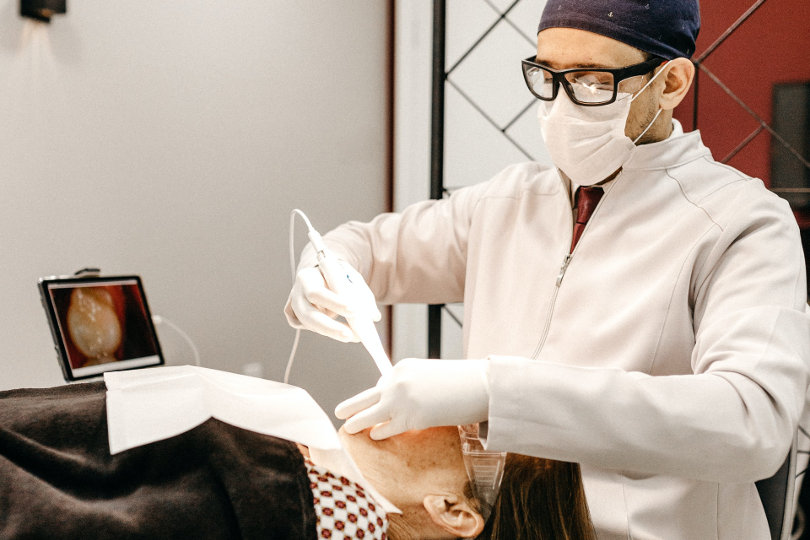The COVID-19 pandemic continues to ravage the U.S. and it has caused statewide lockdowns for over five months now. Because of this, businesses big and small are losing foot traffic, and ultimately, revenue. This is especially apparent in private medical practices that don’t specifically address the pandemic.

Medical Practices in Hot Water
A survey of more than 700 practices in the U.S. at the start of the pandemic found that over 97% of them experienced a negative financial impact because of reasons, directly or indirectly, related to COVID-19. Over 22% of them also reported laying off some of their workers to save costs. And because they’re now understaffed and there aren’t many patients coming in, they’re forced to cut their work hours and reduce salaries.
Another survey, done by New York University and focuses specifically on the practices in NYC, found that more than half of its 120 respondents felt severe stress from decreases in revenue. One of the practices commented that small community clinics aren’t getting the state funds they need to help with their operations.
Medical practices across the nation are struggling to get by because of COVID-19. As such, you need to make creative and strategic changes to your business to help it stay afloat.
Ensure Worker Safety
Your administrative staff, nurses, maintenance personnel, and other workers are the lifeblood of your medical practice. You should do all you can to protect them from the virus while they’re working in your practice.
Here are some recommendations from the Centers for Disease Control and Prevention for employee safety and support during a pandemic.
1. Make Sure Personnel Are Trained in Using PPEs
PPEs or personal protective equipment are a must for everyone when going to work. Make sure that it’s not just your patient-facing workers who use them. Even your administrative and maintenance staff should be wearing at least surgical masks at all times at work to prevent the possible spread of the virus. Orient them using the World Health Organization’s (WHO) easy-to-follow mask usage guide. It covers everything, from how to put on a mask to how to dispose of one properly.
2. Create Protocols for Possible COVID-19 Exposure
Ask your staff to consistently monitor their temperature and well-being consistently while at work. Restrict them from going to the clinic if they develop a fever or any other COVID-19 symptoms. If possible, give them a paid sick leave and recommend them to a testing center. Have them return to work only if they test negative, fully recover, or at least completed a two-week quarantine.

Upgrade Your Patient Service
Now that there are limited ways for your patients to reach you during this pandemic, you need to implement ways to provide care from a distance. Step up your patient service through the following.
1. Improve Your Online Presence
It’s essential for every business to have an online presence nowadays. After all, most customers look for local business information online. It’s no different when it comes to medical practices. Apart from having a website and a social media page, your name, address, and phone numbers should also be on relevant online directories and review sites like Google My Business, Zocdoc, Doctor.com, and more. This will help customers old and new to know exactly how to contact you for an appointment.
2. Digitize Some of Your Services
There are limited ways for you to provide services during this quarantine period, especially if your practice relies on providing physical care. However, some tasks can be done digitally through an electronic medical record (EMR) software. A reliable EMR application can help you with the following:
- Online Appointment Setting. An EMR software can let customers schedule their own appointments online. They don’t have to call your receptionist and they can do it on their own time.
- Telemedicine Done Right. Reduce physical contact between your staff and your patients by providing online consultations through the application’s built-in video conferencing capabilities. It lets you provide expert medical advice to patients beyond your service area as well.
- E-prescription and Patient Messaging. Customers don’t have to drive all the way to your clinic just to renew their prescriptions for new medicine. They just need to consult with you through video or through the app’s instant messaging feature and you can provide them with a signed digital prescription that they can take directly to the pharmacy.
EMR software makes it more convenient to provide medical services to patients. However, it also means that the apps you’ll use will handle sensitive patient information. Make sure the provider you work with ensures their software is compliant with the Health Insurance Portability and Accountability Act (HIPAA) before implementing them on your current system.

The pandemic isn’t slowing down any time soon unless a vaccine is created. As such, you and your patients will be stuck in this new normal for at least a few months more. Use these suggestions to keep your practice safe, available, and profitable during these trying times.




